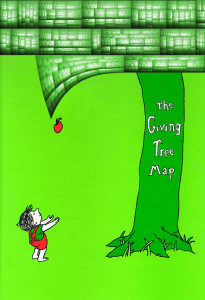There is truth to the saying that sometimes less is more.
Far too often, marketers fall for the trick of thinking that having the most content on their website is the key to ranking high for SEO and building a reputation as an industry thought leader.
However, sometimes the opposite is true.
Too much content can hurt both SEO and audience perceptions. After all, neither search engines nor people want to scan through miles of content to find what’s relevant.
That’s where content pruning comes in. It is a method that will help you cut down on your content.
This article will walk you through content pruning and give you advice on content strategies to implement in the future that will eliminate the need for more pruning as you grow.
- What is Content Pruning?
- Why Delete Older Content?
- When is Content Pruning Really Necessary
- How to Effectively Decide What Content to Prune
- Monitor and Evaluate the Results of Content Pruning
- How to Prevent the Need for Content Pruning
- Wrap Up: Cutting Way to Success
What is Content Pruning?
Pruning is a gardening term meaning cutting back or trimming.
As any good gardener will tell you, pruning is an essential step for ensuring that new growth has room and resources dedicated to helping it survive and remain structurally sound.
Content pruning follows a similar logic.
Old content can be taking away from your company’s growth and is the cause behind some of your lagging traffic or falling search results rankings.
Therefore, in order to remain healthy and thrive in the future, it can be more impactful to cut back on your old content to make way for the new.
Why Delete Older Content?
Even though the concept of pruning isn’t difficult to comprehend, many marketers will still balk at the prospect of deleting older content that has brought them success in the past or contributed to a large content library.
Here are a few big reasons to delete your older content:
Eliminate Out of Date Information
While your top-performing article from 2008 might have brought you success, it’s also probably filled with out-of-date information.
Older statistics can not only affect your Google rankings but also damage your reputation with your audience.
Have you ever come across an article that seemed to fit your query, only to find it was years old and woefully out-of-date?
It’s a frustrating experience.
Improve Your SEO Ranking
Like a tree with too many limbs, websites with too many pages have to fight each other for resources — the resource in this case being your crawl budget.
Google and other search algorithms will only dedicate so much time to your pages, and if old or low-quality content is taking up space, your newer and better content won’t get the time it deserves.
Help Users Find What Matters
If you have your content organized by topic or keyword and have dozens of articles all around similar topics, users will find it hard to find the content that really matters to them or best answers their questions.
Content pruning ensures that only the best information is available, helping your visitors find what they need.
Update Your Linking Structure
A tight linking structure helps search algorithms understand your content.
When you have hundreds of links to old or non-authoritative pages, it can drag your entire SEO ranking down.
Getting rid of old content and having a linking strategy in place will help you improve your overall structure.
Experience Better Quality Content
Let’s be honest — your content has likely improved over time.
Things like ideal word count lengths, blog designs, page layouts, and best practices around images and videos have changed over time, and most likely your older pieces of content are lacking in some of those areas.
Having only high-quality content gives you pride in your website.
When is Content Pruning Really Necessary
One big question around the concept of content pruning is when to do it.
While there is no definitive answer, there are a few signs you can look for that might indicate a change is necessary.
- Traffic to your blog or website has dropped.
- Your content isn’t receiving organic engagement.
- Your pages or keywords don’t rank as high on Google.
- Your customer feedback mentions difficulty finding information.
These are just a few signs that might mean content needs to be pruned.
If you notice any of the above, or see any other concerns or signs regarding your content, a content audit is likely to be needed.
Content Audits
It’s healthy to take a step back and examine all the content you have available on your website.
A content audit is a process that allows you to list all of your content on the same document and inspect, organize, and examine it for accuracy and performance.
A content audit will map out each page you have on your website, subdomain, or folders.
Typically, you build your inventory in an Excel or Google Sheet so you can organize and add metrics to your page list in the form of columns or rows.
Relevant metrics might include:
- Content Type.
- Content Topic.
- Page Views.
- Bounce Rates.
- Conversion Rates.
- Page Authority.
- Inbound Links.
- Publication Date.
Once your audit is completed, you can then start to organize the information and decide what can be cut or un-indexed.
How to Effectively Decide What Content to Prune
Deciding what content to prune will depend on different factors.
Typically, however, you will want to remove content that is old, has poor page authority or page views, or isn’t converting.
Pages with high bounce rates or no inbound links are also pages that probably are hindering your SEO rather than helping.
You also might find areas of content that are overfilled and can be cut down to prevent confusion around specific topics, or articles that address topics that are no longer relevant to your business or industry.
With all this talk of cutting back and helping make room for new growth, it can be easy to go overboard.
Therefore, it’s important to be cautious in your pruning — the last thing you want to do is trim away all your traffic.
Start slow and begin with the worst pages you identify in your audit.
You can also un-index or unpublish the pages without deleting them in case you ever want to restore them to your website.
In addition to deleting or un-indexing pages, there are a few other options for managing your content during a content prune:
Update
Some content isn’t bad but just needs updating.
If a page is getting high views but has statistics or tips that are out of date, updating the content to be more relevant and include more up-to-date information is a great solution that doesn’t require deleting.
You can also add more content to pages so that thin content has more relevance.
Improve
You can also upgrade the quality of your content if you have relevant information that needs to be shared on a poor-performing page.
Improving doesn’t just fall onto the written word either — adding images, video, or adjusting the design and layout of older content can help improve it as well.
Combine
Sometimes shorter articles or blog posts about similar content topics can be combined into one page.
Not only does this help readers find similar and related information in the same post, but it can also help you reach word length requirements that search algorithms enjoy.
Transform
Relevant content sometimes comes in the wrong form.
- Do you have short blogs that can be transformed into LinkedIn posts?
- Does your overly complicated eBook have sections that can be turned into articles?
- Are the details on your product or service information pages more helpful on a separate page?
Transforming your content can help it find a new home in a better format.
Move
While content might be in the wrong format, sometimes it’s just in the wrong place.
Complicated linking structures, confusing menus, or a lack of key pages like an FAQ can lead to content being in the wrong place.
Your audit will help you find pieces of content that need to be moved to a new location that will help the page index better.
Monitor and Evaluate the Results of Content Pruning
When you prune content, it’s important for you to keep a close eye on the results of your pruning.
As mentioned above, deleting too much too fast can damage your traffic and your page results, and sometimes other methods like updating or transforming don’t do enough to improve your content.
Monitoring the results of your content pruning can be as simple as checking on your Google Analytics, or it can be as involved as creating specific metrics and goals you want to achieve as an outcome of content pruning.
In either case, it’s important to keep regular tabs until a clear result is found.
After evaluating the results of your pruning efforts, you can create a pruning strategy to revisit every few months or every few years, depending on the size of your website and the amount of content you put out.
Ultimately, the evaluation and monitoring process will be a continual effort to ensure that what you cut helps you grow.
How to Prevent the Need for Content Pruning
Content pruning is a last-resort step that involves a lot of planning, auditing, implementing, updating, and monitoring.
The entire process can take months, and ultimately puts you and your company through stress.
Wouldn’t it be simpler to avoid content pruning at all?
A well-rounded content strategy can help you avoid it in the future.
Create a Content Calendar
A content calendar is a plan for what content is going to be created and when and where it will be posted.
A well planned-out content calendar can help you create balance in your approach to content.
Not only will this help you create cohesion and clear content marketing goals, but it will also help you manage content and revisit plans in a single place.
Identify the Gaps
A strong content strategy will cover all areas of relevance to your products, services, or industries.
While you might focus or specialize in certain areas in regards to your content offerings, having the depth of information available helps cement yourself as an industry and knowledge leader.
Use your content audit to find the gaps in your strategy and fill them in.
Conduct Content Audits Consistently
Content should always be audited.
Even with a clear calendar for the content you want to create, some things might surprise you with how well they perform or, alternatively, content you thought for certain would be successful might struggle.
Reviewing and noting these things will help you plan for the future.
Make a Plan for Cleaning
No matter how clear your content calendar or how consistently you audit, the content will still become outdated and needs to be cleaned.
However, when you plan in advance for those times, you can avoid an entire content pruning process.
For example, if you know that all content five years or older should be deleted or updated, set times each month to see which pages are included and make your plan accordingly.
Wrap Up: Cutting Way to Success
Content pruning is an important process to visit if you have an overabundance of content or content that isn’t performing well.
Just like a gardener, your job as a marketer means that you are responsible for the success of new growth and the health of your organization.
The results of putting off pruning can be incredibly detrimental and can have serious effects on the success of your SEO strategy.
Speaking about this, do you want to know how your strategies are performing?
Is ensuring that your plan for the future of your company’s SEO can reach the next level important to you?
Take the SEO Maturity Assessment today and identify where your efforts can be best spent!

![[WA] Ultimate Content Marketing Kit](https://rockcontent.com/wp-content/uploads/2022/08/Content-Marketing-Kit-750x200px.jpg)










